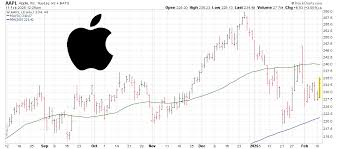Bitcoin Price History and Future Prediction: A Comprehensive Overview
1. Introduction to Bitcoin and Its Origin
Bitcoin (BTC) is the first and most well-known cryptocurrency, created by an anonymous individual or group of individuals under the pseudonym Satoshi Nakamoto. It was introduced in 2008 as a decentralized digital currency with the aim of offering an alternative to traditional financial systems. Bitcoin’s underlying technology, blockchain, allows for secure, peer-to-peer transactions without the need for intermediaries like banks.
Bitcoin’s price has experienced significant volatility since its inception. Initially, it was virtually worthless, but over the years, its value surged dramatically, making it one of the most valuable assets in the world. This article will explore Bitcoin’s price history, analyze its performance over time, and make predictions about its future value.
2. Bitcoin Price in 2010: The Birth of Bitcoin’s Value
Bitcoin was launched in January 2009 with no monetary value. The first recorded Bitcoin transaction took place on May 22, 2010, when a programmer named Laszlo Hanyecz paid 10,000 BTC for two pizzas. At the time, Bitcoin was worth less than a cent per coin, making the transaction worth just a few dollars.
2010: The First Recorded Price
In 2010, Bitcoin was still in its infancy. Early adopters and tech enthusiasts mined Bitcoin primarily for the purpose of experimentation and understanding blockchain technology. Bitcoin’s price fluctuated between $0.0008 and $0.08 per coin during the year, with its first significant price increase occurring in the second half of the year.
Bitcoin’s price began to gain attention when it hit $1.00 for the first time in February 2011. This milestone marked the beginning of Bitcoin’s journey toward becoming a widely recognized and traded asset.
3. Bitcoin Price History: The Rollercoaster Ride
Bitcoin’s price has experienced numerous boom-and-bust cycles, characterized by rapid price increases followed by sharp declines. Below is a brief overview of Bitcoin’s price history in key years.
2011: The First Major Bull Run
In 2011, Bitcoin experienced its first major bull run, with its price reaching $31 in June 2011. This was a 3,000% increase from the price at the start of the year. However, the price crashed in the following months, dropping back down to the $2-$3 range by the end of 2011, primarily due to regulatory concerns and the collapse of the popular Bitcoin exchange, Mt. Gox.
2013: The Year of Volatility
Bitcoin had two major price surges in 2013. The first came in April, when Bitcoin’s price surged to $266, followed by a sharp correction that saw the price drop to around $50. The second surge occurred in November 2013, when Bitcoin’s price reached an all-time high of $1,100. This sudden rise was driven by growing media attention, increasing mainstream adoption, and the announcement of Bitcoin being traded on major exchanges.
However, Bitcoin’s price once again collapsed after hitting $1,100, dropping to around $200 by the end of 2014.
2017: Bitcoin’s Historic All-Time High
The year 2017 marked the beginning of Bitcoin’s mainstream adoption. A series of institutional investments, growing interest from retail investors, and news of Bitcoin futures being introduced on major exchanges like the Chicago Mercantile Exchange (CME) led to a massive bull run. Bitcoin’s price skyrocketed, reaching an all-time high of $19,783 in December 2017.
However, this bull run was unsustainable, and Bitcoin experienced a significant crash, falling to around $6,000 by early 2018. The dramatic price fluctuations led to increased scrutiny from governments and regulatory bodies.
2020-2021: Institutional Adoption and New Heights
In 2020, Bitcoin began its rise toward new all-time highs, driven by institutional adoption and the increasing recognition of Bitcoin as a store of value and digital gold. In October 2020, companies like MicroStrategy and Tesla made large Bitcoin investments, signaling a growing acceptance of the cryptocurrency in the corporate world.
By December 2020, Bitcoin had surpassed its previous all-time high of $20,000 and continued to climb throughout 2021. Bitcoin hit new heights, reaching $64,400 in April 2021, and later, it surpassed the $68,000 mark in November 2021, driven by strong institutional interest, the launch of Bitcoin ETFs, and increased retail investor participation.
2022-2023: Bear Market and Recovery
In 2022, Bitcoin, along with many other cryptocurrencies, entered a bear market. The price of Bitcoin fell from its all-time high of $68,000 in November 2021 to around $20,000 in mid-2022, driven by global macroeconomic factors such as inflation, tightening monetary policies, and the collapse of major crypto projects like TerraUSD and FTX.
However, as of early 2023, Bitcoin began showing signs of recovery, trading around $30,000 to $40,000. The recovery was fueled by increasing institutional adoption, the launch of Bitcoin ETFs, and the overall resilience of the blockchain technology behind Bitcoin.
4. Bitcoin’s Live Price
Bitcoin’s price is highly volatile, and it can change rapidly in short periods. As of the most recent data, Bitcoin’s price fluctuates within a broad range, typically between $20,000 and $70,000 in recent months. The price can be influenced by various factors, including:
- Market Demand: Bitcoin’s price is driven by supply and demand dynamics. As more institutional investors, retail traders, and individuals embrace Bitcoin, the demand for the asset rises, which can drive up its price.
- Regulatory News: News of government regulations and potential crackdowns on cryptocurrency markets can lead to price fluctuations. Positive regulatory news can boost confidence, while negative news can lead to market declines.
- Adoption by Companies and Financial Institutions: The greater the number of companies and financial institutions that adopt Bitcoin, the more its price can rise due to increased demand and market confidence.
- Global Economic Conditions: Bitcoin’s price often rises during times of economic uncertainty, as it is seen as a hedge against inflation and a store of value, similar to gold.
As of now, Bitcoin’s price is tracked in real-time across various platforms such as CoinMarketCap, Binance, and CoinGecko, providing live data on the price and market cap of Bitcoin.
5. Bitcoin Price Predictions: What’s Next for Bitcoin?
Bitcoin has experienced significant volatility over the past decade, and predicting its future price can be challenging. However, several factors could play a crucial role in Bitcoin’s price trajectory in the coming years.
5.1 Increased Institutional Adoption
As more institutions embrace Bitcoin as an asset class, its value could continue to rise. Companies like Tesla, Square, and MicroStrategy have already added Bitcoin to their balance sheets, and more could follow suit. The ongoing development of Bitcoin-related financial products, such as Bitcoin ETFs and futures contracts, will likely provide more avenues for institutional investment.
5.2 Bitcoin as a Hedge Against Inflation
Bitcoin has been increasingly viewed as a hedge against inflation, especially in light of central banks’ policies of low interest rates and massive money printing. If inflation continues to rise globally, Bitcoin’s appeal as a store of value could increase, driving up its price.
5.3 Technological Advancements
The Bitcoin network continues to evolve, with technological improvements such as the Lightning Network aiming to make Bitcoin transactions faster and cheaper. These innovations could make Bitcoin more usable as a global currency and further drive its adoption.
5.4 Regulatory Clarity
Clearer regulations around Bitcoin could encourage institutional investment, leading to a price surge. On the other hand, stricter regulations in major markets could dampen the market sentiment and limit Bitcoin’s growth. The regulatory landscape for Bitcoin is still developing, and how governments handle cryptocurrencies will be a key factor in Bitcoin’s price.
5.5 Long-Term Price Predictions
Experts have varying opinions on Bitcoin’s future price. Some believe that Bitcoin could surpass $100,000 or even $500,000 in the next decade, driven by mass adoption and institutional investments. Others caution that Bitcoin’s volatile nature could lead to significant price corrections, and its value could experience prolonged periods of stagnation or decline.
6. Conclusion: A Revolutionary Asset
Bitcoin has transformed from a niche digital asset to a globally recognized financial instrument. Its price history is a testament to its volatile nature, marked by significant surges and corrections. As Bitcoin continues to evolve, it faces numerous challenges, but its future remains bright due to increasing adoption, institutional interest, and technological improvements.
While predicting Bitcoin’s price with certainty is difficult, its continued relevance in the financial ecosystem suggests that it will remain a key player in the digital economy for years to come. Whether as a store of value, a hedge against inflation, or a speculative investment, Bitcoin’s journey is far from over, and its future remains a subject of intense interest and debate.
This article provides a thorough overview of Bitcoin’s price journey from its inception to the present, including its fluctuations, live data tracking, and future potential. Let me know if you would like any more details added or specific aspects explored further!






